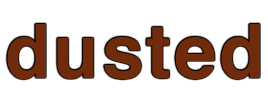



 |
|
 |
|
 |
|
 |
|
|
||||||
| |||||
|
|
||||||||||||||||||||||||||||||||||||||||||
|
Duane Pitre was an interesting guy up until 2012. He had a novel backstory (professional skateboarder gives up the board for rock, then teaches himself to be a minimalist composer) and some solid records, each one different from its predecessor. But then he released Feel Free, a record so complete, gorgeous, powerful, and approachable that it moved him right up to the front of the class. What do you do to follow up a record like that?
Pitre’s response is canny and a bit cautious. Bridges fully lives up to its name, and not just in the way that its composer intended. Pitre envisioned the piece as a bridge between Eastern, modern classical, and Middle Ages liturgical music. It also offers a path from the immersive, computer-based music he’s been playing live for the past year right back to the sound world of Feel Free. Finally, it keeps Pitre’s artistic options open.
Like its predecessor, Bridges features harmonics played on a stringed instrument tuned in just intonation, and voluptuous cello lines that move through said harmonics with unhurried but purposeful grace. But the harmonics on Feel Free originated from Pitre’s guitar collection and were loaded into a computer program that could either play them in semi-random, always-harmonious combinations or cede control to a human player. They were like a three-dimensional framework that could be the entire music, but could also contain and be transformed by external influences. On Bridges, Pitre started with a Turkish lute known as a cumbus, which he retuned to his specifications, and a mandolin, which he set side by side and played with one hand each. Their combined sonorities end up sounding like some celestial banjo instead of the six stringed wind chimes effect that the randomized guitars achieved on Feel Free. Then he added electronics, more plucked sounds from a ukelin, Bhob Rainey’s soprano sax, and Oliver Barrett’s cello.
When the cello cleaves the strings on “Earth/Ember/Serpent” (although the music on each side of the album sports three names, it is divided into just two CD tracks or LP sides) it sounds quite a bit like Feel Free. But the way it behaves is different. There’s no random element, and consequently the endless change of Feel Free is replaced by a more purposefully directed progress. On “Cup/Aether/Crane,” sustained cello tones stretch, accumulate, and curl over an electronic drone that in turn progresses like some ancient piece for church organ. When the plucked strings appear, they feel more like decoration than a framework.
If you’re looking for another record that sounds like Feel Free, Bridges hits the spot without merely duplicating it. But it also rings some changes. The withdrawal of Feel Free’s random elements reasserts compositional control, and in doing so makes clear that Pitre is a creator of systems rather than an artist beholden to a particular system. Who knows, he might even abandon just intonation someday. And it might sound just as good as the music he’s making right now, only different. By Bill Meyer
|
|||||||||||||||||||||||||||||||||||||||||
| |||||